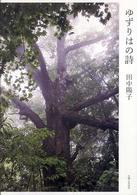- ホーム
- > 洋書
- > 英文書
- > Science / Mathematics
Full Description
Despite the world's aging population, suitable clothing for the older community is a largely neglected area. This book considers the needs of the growing number of active older people and investigates how recent developments in textiles, fibres, finishes, design and integrated technology can be deployed to serve this group and improve quality of life.
Part I provides an understanding of the active aging population by considering the group's experiences of and attitudes towards clothing and reviewing the barriers to their adoption of new wearable technologies. Part II focuses on the needs of the older population, including effective communication with designers and the age-related anatomical and physiological changes that designs should consider. Part III reviews design requirements and processes, and finally Part IV reviews the manufacture of suitable apparel, with chapters on suitable textile fibres, balancing technology and aesthetics and wearable electronics.
Contents
The Textile Institute and Woodhead Publishing
List of contributors
Woodhead Publishing Series in Textiles
Part One. Understanding the active ageing population
1. Technological culture and the active ageing: a lifetime of technological advances
1.1. Introduction
1.2. Learning and teaching
1.3. Photography, audiovisual technologies, and e-learning
1.4. Implications for the active ageing
1.5. Conclusions
1.6. Sources of further information and advice
2. Clothing, identity, embodiment and age
2.1. Introduction: clothing, social identity and age
2.2. Age ordering
2.3. Age-related clothing
2.4. The changing cultural location of older people
2.5. Baby boomers
2.6. Casual dress
2.7. Adjusting the cut
2.8. Conclusion
3. Attitudes to apparel amongst the baby boomer generation
3.1. Introduction
3.2. The baby boomers and the growth of marketing
3.3. Baby boomers and their interaction with apparel and textiles
3.4. Market implications
3.5. Current lifestyle trends for the baby boomers and product needs for the future
3.6. Conclusion
4. The importance of colour in textiles and clothing for an ageing population
4.1. Introduction
4.2. Attitudes towards colour amongst the active ageing
4.3. The colour selection process for clothing
4.4. Colour forecasting
4.5. Classic and changing colours
4.6. How the colour selection process starts: designers and inspiration
4.7. Sharing information: the case of the British Textile Colour Group
4.8. How colour palettes are used
4.9. From colour palette to product
4.10. Conclusion
5. The adoption and nonadoption of new technologies by the active ageing
5.1. Introduction
5.2. Technological use by the active ageing
5.3. Internet access in care and nursing homes
5.4. Internet access, leisure activities, and the active ageing
5.5. How do the active ageing adopt new technologies?
5.6. Wearable technology and the active ageing
5.7. Tablet technologies and the active ageing
5.8. Social media, communities, and the active ageing
5.9. Conclusions
5.10. Sources of further information and advice
Part Two. Understanding and researching apparel needs amongst the active ageing population
6. Qualitative and quantitative methods applied in active ageing
6.1. Introduction
6.2. Meaning and interpretation
6.3. Knowledge acquisition
6.4. Qualitative research methodologies
6.5. Survey techniques
6.6. Direct contact information-gathering techniques
6.7. Qualitative analysis techniques
6.8. Quantitative survey development
6.9. Research ethics
6.10. Qualitative research aspects of co-design
6.11. Future trends
7. Effective communication in product development of smart wearable clothing for the active ageing population
7.1. Introduction
7.2. Communication complexities in product design
7.3. Understanding the terminology of different disciplines in product design
7.4. Terms with different meanings between specialisms
7.5. Visual approaches to developing a common understanding
7.6. Bringing different disciplines together in co-design
7.7. Using visual communication to help develop a common language in the Design for Ageing Well (DfAW) project
7.8. Case study: communication between disciplines
7.9. Case study: communication with textile industry designers and manufacturers
7.10. Case study: communication with retail
7.11. Case study: communication with wearers
7.12. Conclusion
8. Anatomical and physiological changes with age: implications for apparel design
8.1. Introduction
8.2. Anatomical and morphological changes
8.3. Physiological changes
8.4. Factors affecting wearability and unwearability
8.5. Conclusions
9. Thermoregulation and clothing comfort
9.1. Introduction: what is clothing comfort?
9.2. Homeostasis and thermoregulation: maintaining a constant body temperature
9.3. Human thermoregulatory system
9.4. Thermoregulatory responses
9.5. Factors affecting thermoregulation
9.6. Clothing and thermoregulation: clothing as a barrier between the body and the environment
9.7. Moisture management
9.8. Thermoregulation and the traditional outdoor layering system: discussion
10. Ageing populations: 3D scanning for apparel size and shape
10.1. Introduction
10.2. Population
10.3. Active ageing
10.4. Design for all ages
10.5. Anthropometrics
10.6. Case studies drawing on the sizeUK national sizing survey
10.7. Future trends
Part Three. Apparel design requirements for the active ageing population
11. The role of wearable electronics in meeting the needs of the active ageing population
11.1. Introduction
11.2. Current applications and end-users
11.3. Communication and entertainment
11.4. Comfort and safety in the outdoors
11.5. Fitness monitoring, sports performance and health care
11.6. Apparel heating systems
11.7. Commercial challenges of wearable electronics for active ageing
11.8. Implementation considerations
11.9. Conclusion
12. Overview of the design requirements of the active ageing
12.1. Introduction
12.2. Defining smart clothes and wearable technology
12.3. An introduction to the clothing layering system
12.4. The identification of user needs: design fit for purpose
12.5. Co-design approach to smart clothing development
12.6. The way forward
13. Co-design principles and practice: working with the active ageing
13.1. Introduction
13.2. Capturing user experiences: clothing and technology
13.3. Explaining the attributes of the 'layering system' to older users
13.4. Segmenting types of walking
13.5. Creating personas to guide the design process
13.6. Creating a range plan to cater for different walking requirements
13.7. Future trends
13.8. Conclusion
14. Public involvement in garment design research
14.1. Introduction
14.2. Background to public involvement in design research
14.3. Planning for public involvement
14.4. Designing research studies
14.5. Conducting the research
14.6. Beyond the study
14.7. Additional processes
14.8. Conclusion
15. The co-design process for apparel for the active ageing population: the participant experience
15.1. Introduction
15.2. The New Dynamics of Ageing (NDA) programme and the Older People's Reference Group (OPRG)
15.3. Engaging in the Design for Ageing Well project
15.4. Training of volunteers in user engagement
15.5. Getting to know terminology in the clothing for active ageing sector
15.6. Getting to know the textile industry: the International Sporting Goods Trade Fair 2010 (ISPO 2010)
15.7. Getting to know the textile retail sector
15.8. Getting volunteer participants
15.9. The co-design process and outcomes
15.10. Conclusions
16. Key choices in developing sustainable apparel for the active ageing population
16.1. Introduction
16.2. Ageing market
16.3. Understanding of sustainability
16.4. Achieving sustainability through considered design
16.5. Conclusion
17. Issues and techniques in the inclusive design of apparel for the active ageing population
17.1. Background
17.2. Mechanisms of engagement
17.3. Inclusive design: origins, definitions, and the limits of terminology
17.4. Immersive workshops
17.5. User forums and interviews
17.6. Making the case for inclusive design
17.7. Conclusion
Part Four. From design to apparel for the active ageing population
18. From co-design to design specifications and manufacture of apparel for the active ageing population
18.1. Introduction
18.2. Design brief to point of sale (POS), the current process
18.3. Growing awareness of the ageing market
18.4. Co-design - listen, learn, develop, repeat, refine and repeat
18.5. Co-design - industry involvement
18.6. Getting to store
18.7. Conclusion
19. What textile fibres are applicable for the layering system for the active ageing?
19.1. Introduction
19.2. Natural fibres
19.3. Synthetic fibres
19.4. Synthetic cellulosics
19.5. Biofibres
19.6. Textiles and fibres for health and well-being
19.7. Smart, sensory and adaptive materials
19.8. Interactive technologies
19.9. Environmental and sustainability concerns
19.10. Conclusion
19.11. Future trends
20. Designing base layers for apparel for the active ageing population: balancing technology and aesthetics
20.1. Introduction
20.2. Defining technologies
20.3. The roles of body and base layers in a clothing system
20.4. Designing for the older body shape
20.5. Technical and aesthetic design considerations and processes
20.6. Manufacturing considerations: materials, methods and costs
20.7. Conclusion
20.8. Future trends
21. Co-design development: design direction for the clothing layering system as a wearable technology platform
21.1. Introduction
21.2. Creating a hierarchy of emerging key design requirements
21.3. Sorting and elaborating the design requirements: form
21.4. Co-design prototype design development process
21.5. Technical 3D development
21.6. Final prototype development
21.7. The way forward: design direction to help bring product to market
22. Developing a strategy for the effective specification of functional clothing with integrated wearable technology
22.1. Introduction
22.2. Co-design team
22.3. Co-design development process: liaison with end-users
22.4. Liaison with technology developers
22.5. Liaison with garment developers
22.6. Design communication
22.7. Example: hybrid design specification
22.8. Challenges in the global clothing supply chain
22.9. Conclusion: more sustainable garment development
22.10. Future trends
23. Developing footwear for the active ageing population
23.1. Introduction
23.2. Footwear requirements for older people
23.3. Meeting individual footwear requirements
23.4. Researching walking footwear for older people
23.5. Discussion: key requirements for walking shoes for older people
23.6. Conclusion
24. Design for ageing: a focus on China
24.1. Introduction
24.2. Background to clothing design in China
24.3. Introducing Design for Ageing Well in China
24.4. Case study: student project
24.5. Design direction: merging key findings
24.6. Way forward
25. Experiences in the design, iterative development and evaluation of a technology-enabled garment for active ageing walkers
25.1. Introduction
25.2. Background
25.3. Examples of research projects in health care monitoring
25.4. Research methodology
25.5. Prototype iterative developments and evaluations
25.6. Discussion
25.7. Conclusions
Index







